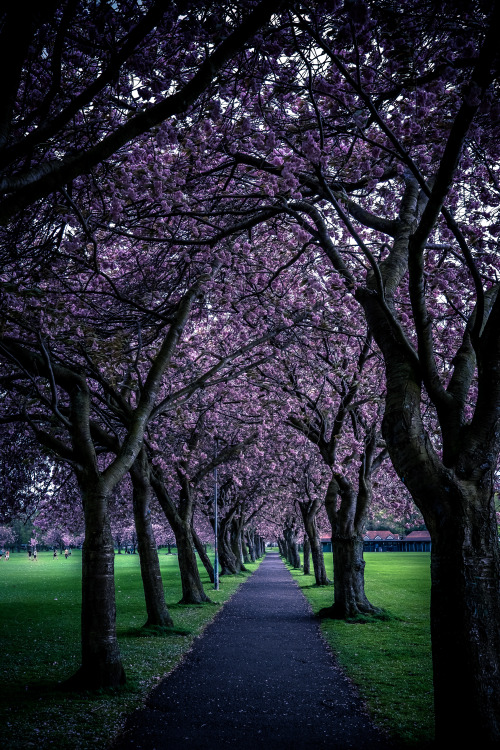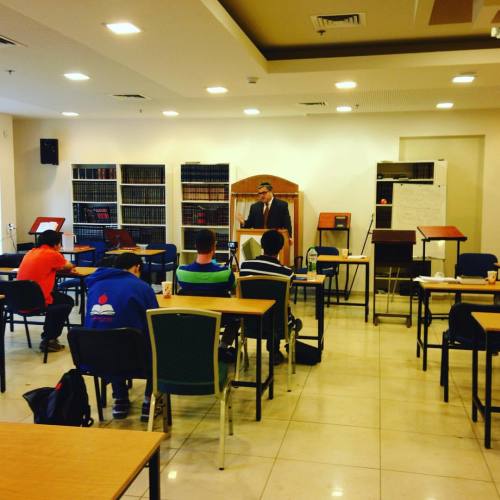Jewish Cemetery In Yeghegis, Armenia, 13th Century

Jewish cemetery in Yeghegis, Armenia, 13th century
More Posts from Farkash-gallery-blog and Others

Tahitian Pastorals
Paul Gauguin, 1893

Can’t make it to New York for Matisse: The Cut-Outs? Experience it tomorrow at your local movie theater. Search locations and times near you.
[Image by Andrew Hinderaker for The Wall Street Journal]

Dark paths. Edinburgh, Scotland
original travel photography by- mbphotograph
8 About Art: Alanna Martinez

Your Twitter bio states “ask me about art & pasta anytime” so we must ask: For the love of pasta, what’s your favorite pasta dish?
Pasta is a beautifully versatile food, you can go so many ways with it, but my favorite pasta dish is about as simple as it gets. For the pasta itself: this dish goes best with shells (cocciolettte), campenelle, or penne. Add a whole lot of unsalted butter—at least a tablespoon—or you can substitute olive oil. Then, a generous amount of pecorino romano cheese. Then some pepper, and salt if you don’t think it’s salty enough already. Then enjoy! Simply put: pasta with butter and cheese. You can’t go wrong.
Do you have a personal background in the arts? How did you get started?
I grew up in the art world. My father is an artist, and I grew up in his studio. I went to an arts high school in Manhattan where I had a traditional conservatory-style education—drawing, oil painting, watercolor, basic anatomy, etc. After basically doing four years of art school in high school I was hesitant to do another four years at the college level, but I wasn’t ready to stop studying art all together, so I chose to attend a liberal arts school where I focused on photography, sculpture, and art history. While in undergrad, I ran the school’s visual arts publication, so after I graduated I looked for publishing opportunities in the art world and landed an internship at an art magazine. And that’s where I fell in love with art writing.

If so, what’s your favorite medium to work in?
I love the freedom of sculpture. In undergrad, I hit a point with photography where I started exploring video and installation in my work, and thankfully my professor suggested the following semester I sign up for a sculpture class to see if would open up new possibilities for my work. I was blown away by just how much it did.
Today, there are a lot of artists on Instagram. Are you seeing this trend? Any must follows you recommend?
Instagram is a great medium for artists to show off their work in the studio, and give people a view of how they see the world. I follow a lot of galleries, institutions, and artists, but I’ve also discovered a lot of comic artists and illustrators through Instagram and fallen in love with their work.
Are there any cities with an up and coming art market we should know about?
Plenty—though there are more up and coming regions than cities. Really, the Internet has widened the market exponentially. You can be a collector anywhere, and having a foothold at major fairs all over the world is becoming all the more important. Cities with multiple fairs, or new biennials are definitely ones to watch.
What’s your all-time favorite museum that you frequent?

The Met. It’s my favorite museum in the world. Something about it feels like home, even though there’s a massiveness to its collection and halls that makes me feel like I’ll never be able to know every inch of it. My favorite room holds the Panoramic View of the Palace and Gardens of Versailles, painted by John Vanderlyn between 1818 and 1819. While it’s meant to transport you—through minute detail and photographic realism—to the palace’s gardens, there’s something surreal and otherworldly about the palate and wide-angled perspective.
Any can’t miss art events happening this summer in NYC?

Works by French artist Pierre Huyghe are all over the city this summer, and not to be missed. His roof garden commission is currently on view at the Met—where visitors will also have a breathtaking and unique view across Central Park—and his sculpture Untilled is up in MoMA’s sculpture garden, in addition to screenings of his film The Host and the Cloud. I’m also excited personally to see the Brooklyn Museum’s “Rise of Sneaker Culture” and “FAILE” exhibitions.
Any advice for those interesting in breaking into the art market as a writer?
See as much art as you can, read everything being published by outlets you’d want to write for, and remember that tearing people down is not a critic’s main job. Instead, be open to discovering what’s new and exciting and sharing that with others.

Pablo Picasso - Woman sitting in an armchair

#Livingthedream day 428 It always a privilege to have great leaders of the Jewish people speak to the students at www.migdalhatorah.org We heard a stirring teshuva drasha from Rabbi Steven Burg of Aish. (at Yeshivat Migdal Hatorah)

The Black Widow: Forever Red YA book by Margaret Stohl is now available for pre-order! Get it here.



Jewish Art in Late Antiquity and Early Byzantium
“In the first centuries C.E., Jewish communities could be found in every corner of the Roman empire, from Sardis (Turkey) to Ostia (Italy), from Hamman Lif (Tunisia) to Intercisa (Hungary). The archaeological remnants and literary attestations of more than 150 synagogues throughout the empire make clear that Jews were integral to the urban landscape of late antiquity, well beyond the borders of Roman Palestine. In early Byzantine synagogues, specifically Jewish symbols—shofarot (ram’s horns), menorot (branched lamps), and Torah shrines—might appear alongside pomegranates, birds, lions, and fountains. Asia Minor, in particular, boasted numerous, and often prosperous, Jewish communities. The third-century synagogue in the Roman garrison town of Dura-Europos, like the Christian meeting house and the shrine devoted to the Persian god Mithras that stood just yards away, was adorned with sumptuous painting. Splendid murals with narrative scenes from the Bible covered the synagogue’s walls; painted tiles of zodiacal symbols ornamented its ceiling. Plaques with dedicatory inscriptions give some indication of the individuals and families who funded the building of such synagogues. ”

“Upritchard’s proclivity for painting her characters’ skin in tones such as jaundiced yellow, mossy green, or calming lavender— sometimes in two tones or even a rainbow of hues—or having the patterns of their clothing continue onto their faces and hands, as if they have evolved to be able to camouflage themselves within their immediate surroundings, suggests that these creatures may signify a future race. But the combination of recognizable referents that appear to leave her figures nearly paralyzed—their partially opened eyes in a continuous state of rueful pondering— is what the viewer will recognize as disconcertingly familiar, a state of mind that syncs up perfectly with the contemporary moment.”
Hammer Projects: Francis Upritchard closes on Sunday: http://bit.ly/1GpKIbQ






Adapting Traditions for Modern Judaical Art with @tobylouketubah
To see more of Toby’s ketubot and other Jewish cultural art, follow @tobylouketubah on Instagram.
San Francisco-based artist Toby Simon (@tobylouketubah) grew up in a house full of Jewish art and with a very creative spirit. “I had a junk box in my room that was filled with things I collected like: berry cartons, straws, ribbons and random bits of plastic.” Later in college, Toby discovered a passion for Hebrew calligraphy and began designing her own Judaical art, featuring references to Jewish culture ranging from menorahs and poetry to modernizing ketubah, the Jewish marriage contract.
“What I love most about a ketubah is that it connects us to our ancestors, but at the same time by modernizing the text we can now include interfaith, secular or same-sex marriages; marriages that were not accounted for in the earliest Aramaic versions,” she says. “As a ketubah designer I feel proud to be a part of this progression.”
A full-time mom with two children, Toby finds time to create early in the morning or during nap time. For the upcoming Jewish holiday of Hanukkah, she continues to adapt tradition. Her menorahs made of fabric and buttons are a “safe way for children to count out the eight nights of Hanukkah with their parents.”
-
 mr--blackwhite liked this · 3 years ago
mr--blackwhite liked this · 3 years ago -
 hokheseho liked this · 4 years ago
hokheseho liked this · 4 years ago -
 ember-lily liked this · 6 years ago
ember-lily liked this · 6 years ago -
 montagnarde1793 liked this · 6 years ago
montagnarde1793 liked this · 6 years ago -
 regularlesbian liked this · 6 years ago
regularlesbian liked this · 6 years ago -
 galatur reblogged this · 6 years ago
galatur reblogged this · 6 years ago -
 camfoc liked this · 6 years ago
camfoc liked this · 6 years ago -
 boychilla liked this · 6 years ago
boychilla liked this · 6 years ago -
 carrionpeony liked this · 6 years ago
carrionpeony liked this · 6 years ago -
 famousdonutyouth liked this · 6 years ago
famousdonutyouth liked this · 6 years ago -
 farmrebbetzin liked this · 6 years ago
farmrebbetzin liked this · 6 years ago -
 meredoubt liked this · 6 years ago
meredoubt liked this · 6 years ago -
 098766799 liked this · 6 years ago
098766799 liked this · 6 years ago -
 potkumarja liked this · 6 years ago
potkumarja liked this · 6 years ago -
 taintsheriff liked this · 6 years ago
taintsheriff liked this · 6 years ago -
 tsene-rene reblogged this · 6 years ago
tsene-rene reblogged this · 6 years ago -
 pickledangel liked this · 6 years ago
pickledangel liked this · 6 years ago -
 hufflepuffamitygirl liked this · 6 years ago
hufflepuffamitygirl liked this · 6 years ago -
 crustaceanenjoyer liked this · 6 years ago
crustaceanenjoyer liked this · 6 years ago -
 pseudocapsicum liked this · 6 years ago
pseudocapsicum liked this · 6 years ago -
 all-purpose-utility-nerd liked this · 6 years ago
all-purpose-utility-nerd liked this · 6 years ago -
 vladtheunfollower reblogged this · 6 years ago
vladtheunfollower reblogged this · 6 years ago -
 vladtheunfollower liked this · 6 years ago
vladtheunfollower liked this · 6 years ago -
 pokatris liked this · 8 years ago
pokatris liked this · 8 years ago -
 cheezbot liked this · 9 years ago
cheezbot liked this · 9 years ago -
 annanabi-blog reblogged this · 9 years ago
annanabi-blog reblogged this · 9 years ago -
 annanabi-blog liked this · 9 years ago
annanabi-blog liked this · 9 years ago -
 gedhveikur liked this · 9 years ago
gedhveikur liked this · 9 years ago -
 basturma liked this · 9 years ago
basturma liked this · 9 years ago -
 scottostrowski liked this · 9 years ago
scottostrowski liked this · 9 years ago -
 unver38 liked this · 9 years ago
unver38 liked this · 9 years ago -
 cealleaigh reblogged this · 9 years ago
cealleaigh reblogged this · 9 years ago -
 aegean-okra reblogged this · 9 years ago
aegean-okra reblogged this · 9 years ago -
 madtomedgar liked this · 9 years ago
madtomedgar liked this · 9 years ago -
 elvencantation reblogged this · 9 years ago
elvencantation reblogged this · 9 years ago -
 elvencantation liked this · 9 years ago
elvencantation liked this · 9 years ago -
 fromotterspace reblogged this · 9 years ago
fromotterspace reblogged this · 9 years ago -
 nickididntstartthefire reblogged this · 9 years ago
nickididntstartthefire reblogged this · 9 years ago -
 nickididntstartthefire liked this · 9 years ago
nickididntstartthefire liked this · 9 years ago -
 hello-hayati liked this · 9 years ago
hello-hayati liked this · 9 years ago -
 jugayism liked this · 9 years ago
jugayism liked this · 9 years ago